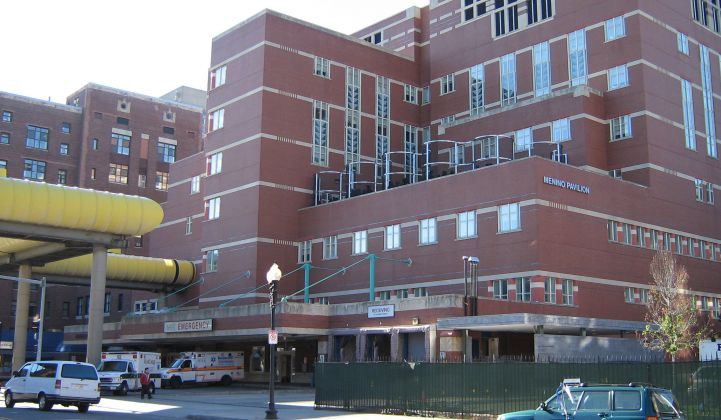Massachusetts awarded more than $18 million to thirteen projects across the state to enhance energy resiliency. The money will go to critical facilities for combined heat and power, battery storage and microgrids.
The town of Wayland will receive approximately $265,000 for advanced switches and islanding capability at the middle school, which would allow the school, which serves as a shelter in times of emergency, to rely less on diesel and more on solar PV when the power goes out. The project could add batteries in the future, which would allow it to function as an islandable microgrid.
Some projects are already looking at the various benefits of a battery storage beyond emergencies. The community of Sterling will size its array to allow for the islanding of critical services, but will also use it for demand response, frequency regulation and load shifting. A battery system in the town of Dennis will also be used to reduce peak load at the high school where it will be located.
Northampton received $3 million to move toward a microgrid for three key emergency facilities, including a school, hospital and the department of public works. The city will identify the critical load and then build the combined microgrid, which will incorporate battery storage and renewable energy.
The city of Holyoke will put in a 53-kilowatt solar photovoltaic system at the fire department headquarters with a 300-kilowatt-hour battery bank. The city’s emergency communication tower will get a small PV system, a small wind turbine and a 200-kilowatt-hour battery. The two projects could keep the facilities going for three days in the event of an outage. A school that is used as a shelter in emergencies will also receive a battery bank and PV array. The trio of projects will also be islandable if the larger grid goes down.
Other projects include a 60-kilowatt combined heat and power system in the town of Barnstable, a co-generation system at Boston Medical Center, batteries for existing solar PV systems in Cambridge, Greenfield and Chelmsford and solar PV and batteries in Medford and Beverly.
The funding comes on top of more than $7 million awarded in October for distributed generation and energy storage projects, including a $1.45 million community microgrid in the towns of Berkley and Taunton.
The amount of funding disbursed in Massachusetts doesn’t quite match the funds being spent just to the south in Connecticut, which has put out more than $30 million for its microgrid program. New York also opened a $40 million microgrid competition early last year, while New Jersey put up $200 million for its Energy Resilience bank, which will support distributed energy resources at critical facilities, with an early focus on water and wastewater treatment plants. Maryland has called for utility-run, community microgrids with a focus on resiliency, although no projects have been formally announced.
States hit by Superstorm Sandy aren’t the only ones putting money into microgrid projects. California announced $26.5 million in grants last summer for microgrid projects that put renewable integration front and center.
GTM Research forecasts U.S. microgrid capacity will exceed 1.8 gigawatts by 2018, with a total value over $3 billion.



